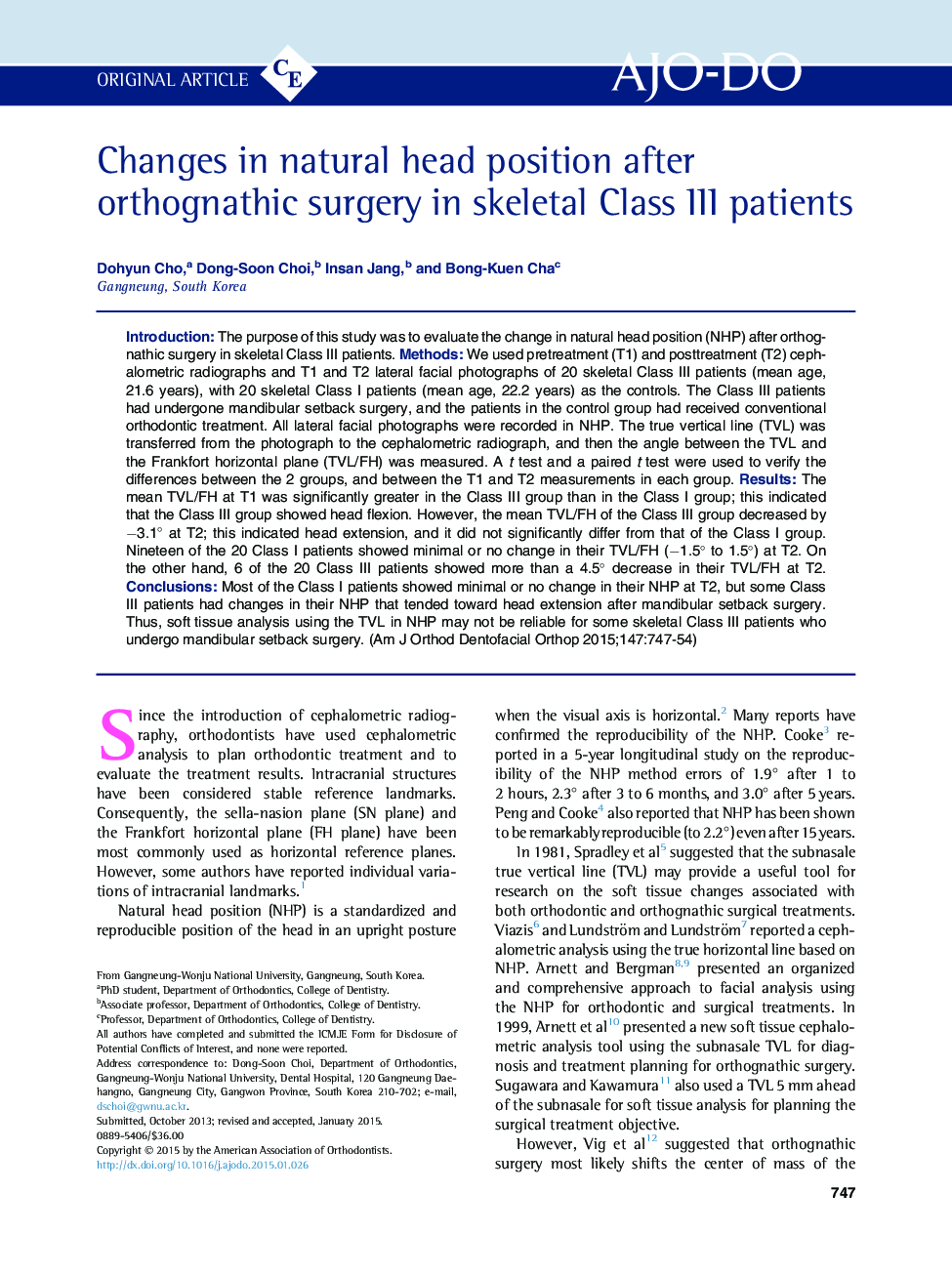| Article ID | Journal | Published Year | Pages | File Type |
|---|---|---|---|---|
| 3116019 | American Journal of Orthodontics and Dentofacial Orthopedics | 2015 | 8 Pages |
•We evaluated natural head position (NHP) in Class III patients after orthognathic surgery.•Mean angle between the true vertical line and Frankfort horizontal plane in the Class III group decreased by −3.1° after surgery.•Class I patients showed little or no change in NHP after orthodontic treatment.•NHP changed in some Class III patients after mandibular setback surgery.•They had more head extension after surgery.
IntroductionThe purpose of this study was to evaluate the change in natural head position (NHP) after orthognathic surgery in skeletal Class III patients.MethodsWe used pretreatment (T1) and posttreatment (T2) cephalometric radiographs and T1 and T2 lateral facial photographs of 20 skeletal Class III patients (mean age, 21.6 years), with 20 skeletal Class I patients (mean age, 22.2 years) as the controls. The Class III patients had undergone mandibular setback surgery, and the patients in the control group had received conventional orthodontic treatment. All lateral facial photographs were recorded in NHP. The true vertical line (TVL) was transferred from the photograph to the cephalometric radiograph, and then the angle between the TVL and the Frankfort horizontal plane (TVL/FH) was measured. A t test and a paired t test were used to verify the differences between the 2 groups, and between the T1 and T2 measurements in each group.ResultsThe mean TVL/FH at T1 was significantly greater in the Class III group than in the Class I group; this indicated that the Class III group showed head flexion. However, the mean TVL/FH of the Class III group decreased by −3.1° at T2; this indicated head extension, and it did not significantly differ from that of the Class I group. Nineteen of the 20 Class I patients showed minimal or no change in their TVL/FH (−1.5° to 1.5°) at T2. On the other hand, 6 of the 20 Class III patients showed more than a 4.5° decrease in their TVL/FH at T2.ConclusionsMost of the Class I patients showed minimal or no change in their NHP at T2, but some Class III patients had changes in their NHP that tended toward head extension after mandibular setback surgery. Thus, soft tissue analysis using the TVL in NHP may not be reliable for some skeletal Class III patients who undergo mandibular setback surgery.
